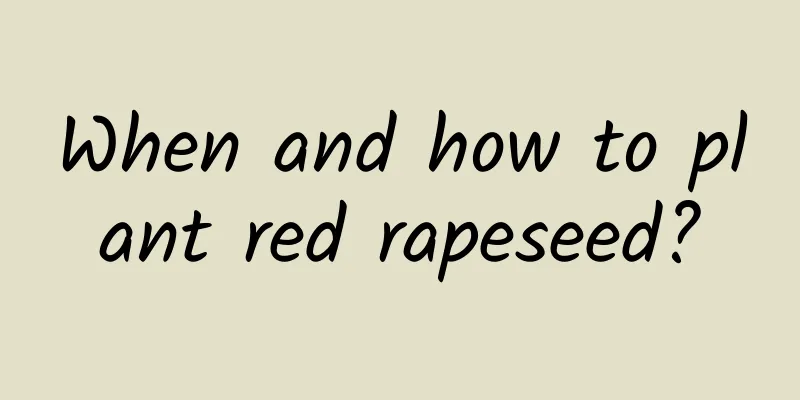The cultivation methods and precautions of Schefflera

1. Maintenance methods1. Light: It is more suitable for an environment with sufficient light, and try to place it in a place with good sunlight conditions. However, you still need to pay attention to prevent sunburn in the summer, and just ensure sufficient sunlight in the winter. 2. Water: Be careful when watering Schefflera. Wait until the soil is completely dry before watering it, and water it thoroughly each time. Water more in the summer and less in the winter. Especially in the winter, if you water too much, the roots will rot. 3. Temperature: 16℃-24℃ is more suitable for its growth. The temperature should not exceed 30℃ in summer. Try to grow it indoors in winter and the temperature should be kept above 12℃. However, do not blindly pursue the temperature and place it next to the heater or stove. 4. Soil: It is best to use relatively fertile soil for growing schefflera. When preparing the soil, it is best to make it loose, which is very beneficial for drainage and root absorption. 2. Breeding techniques1. Pruning: Most plants need pruning, and schefflera is no exception. When pruning, mainly remove dry leaves, yellow leaves and flower stalks after flowering. In addition, when serious diseases and insect pests occur, appropriate pruning can be done to control the disease. 2. Repotting: Repotting is basically done in spring every year. When repotting, the soil at the roots can be properly retained. Just add new disinfected soil to the pot and replant it. Remember to water it thoroughly. 3. Problem diagnosis and treatment1. Pests: Round shield scale is a common pest, which seriously affects the ornamental value of Goosefoot. Once found, it should be brushed off immediately, or sprayed with red cliff branches, the effect is more obvious. 2. Red spider mites: Red spider mites are usually not easy to be found as they are a pest and seriously affect the water metabolism balance of the plants. Once found, they should be immediately sprayed with 40% trichloronate and the effect will be seen soon. IV. Other issues1. Can it be grown indoors: Goosefoot can be grown indoors, but the room must maintain good ventilation to avoid the breeding of pests and bacteria. It is best not to grow it in the bedroom as it will absorb oxygen and release carbon dioxide at night. 2. Is it poisonous? The juice of Schefflera is slightly toxic. If you accidentally come into contact with its juice during breeding, you must rinse it with clean water in time. However, its toxicity is not very high and will not pose a major threat. Just pay more attention when breeding. |
<<: Cultivation methods and precautions of lilac
>>: Cultivation methods and precautions of dolphin flower
Recommend
Soybean planting and harvesting time
Soybean planting time The time of soybean plantin...
Cost and profit of Houttuynia cordata cultivation
The planting benefits of Houttuynia cordata are v...
How to grow Lithops in summer
1. Watering For Lithops, watering in summer is ve...
Changing the soil of the fortune tree, the time and method of changing the soil, and the maintenance precautions after changing the soil
Time to change the soil of the fortune tree Gener...
The efficacy and function of iris
1. Appetite Anthurium has the effect of stimulati...
The efficacy and function of saxifrage
effect Foliage There are several leaves of Saxifr...
Complete Method of Propagating Kalanchoe
Cutting propagation of Kalanchoe The cutting prop...
How to make bonsai of papaya begonia
1. Choose pot and soil When making papaya begonia...
Does Christmas cactus need sunlight? (Master these few tricks to meet the lighting requirements for Christmas cactus flowering)
Except when the temperature exceeds 32 degrees Ce...
Can Jabuticaba be grown indoors?
Can Jabuticaba be grown indoors? If jaboticaba is...
The efficacy of hawthorn, the efficacy of drinking hawthorn soaked in water
1. The efficacy of hawthorn Promote female uterin...
What are the precautions for gardenia repotting and how to maintain it after repotting?
Things to note when repotting gardenia Gardenias ...
How to plant primroses
1. Sowing time The main consideration is whether ...
What is the flower language of forget-me-not
Flower Language Everlasting love, deep friendship...
How much is the yield of sweet sorghum per mu?
Sweet sorghum yield per mu Sweet sorghum is a com...









